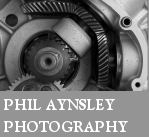


Several detail improvements have been effected on the machine; the wheels are interchangeable, and both brakes work in dummy belt rims.
The capacious locker of the new Martinsyde sidecar, capable of holding three petrol tins in addition to other oddments, is noticeable.
Roomy comfort rather than super streamlining has been the aim of the Martinsyde sidecar designer.
MARTINSYDE.
The engine units of the Martinsyde machines are unique in having the valves disposed so that the exhaust is overhead and immediately above the inlet Valve, which is in a normal position at the side of the cylinder; this arrangement does much to keep the cooling of the head reasonably even, so avoiding distortion. In detail the 6 h.p. sidecar outfit has been improved, especially as regards the interchangeable wheels, brakework, and the sidecar.
The 3½ h.p. twin sports solo model will, of course, be shown. Further reference to Martinsyde improvements and alterations for next year will be found on another page of this issue.
NOVEMBER 24th, 1921. p667
Advance Details of 1922 Models.
Martinsyde 1922 Models.
Detail Frame and Transmission Improvements Interchangeable Wheels. Dummy Belt Rim Brakes.
IT is chiefly in detail improvements that the 1922 6 h.p. Martinsyde sidecar outfit differs from its predecessor. The 6 h.p. 50° twin-cylinder engine, 70x88 mm. (678 c.c), with overhead exhaust valves, ball bearing crankshaft and camshafts, and roller bearing big ends, remains unaltered, but the high-speed chain is now enclosed by a cast aluminium chain case, while the rear chain is protected by means of an efficient guard. So far as the gear box is concerned, the kick-starter mechanism is now entirely enclosed; it is fitted with an arrangement to prevent jamming, and works with surprising smoothness. Particular attention has been paid to mudguarding, 6 in. guards being fitted all round. For the coming season 26 x 3in. interchangeable and detachable wheels will be fitted, with a brake rim fitted to each. The front brake is hand controlled while the rear brake is actuated by foot and provided with a ratchet so that the machine may be left unattended on a hill.
The particular model illustrated is not fitted with the latest pattern tank, which will be set across the top tube and secured by concealed fastenings. Electric lighting is supplied, in this particular case from an accumulator.
For 1922, a Millford de luxe sidecar chassis, with dual tubular side members attached to the motor cycle frame at three points, has been adopted, while the body, which is of JIartinsyde's own construction, is mounted on C springs fore and aft. It ia provided with a sloping door of ample size, so as to give ease of entry, and at the rear is a spacious locker, which will accommodate three tins of petrol. An excellent screen is provided, while there is also a cover for the body as well as an efficient hood. In this and other Martinsyde models the finish has been greatly improved in every detail, bright parts being eliminated wherever possible. Practically similar in every detail to the sidecar model just described is the 6 h.p. sports model, but the latest pattern now possesses a kick- starter, and while the top gear ratio of the sidecar machine is 5½ to 1, that of the sports model is 4 to 1. The 3½ h.p. Martinsyde sports model, which is a small replica of the aforementioned machine, has a 496 c.c. 60x88 mm engine. In this case, a kick- starter is also provided, and the is 4½ to 1.
We have had considerable road experience with the 6 h.p. Martinsyde sidecar outfit during the present season, both as passenger and driver, and can testify to the efficiency and smooth running of the engine, the behaviour of which is more like an 8 than a 6 h.p. - no doubt the overhead disposition of the exhaust valve is responsible for this.
The manufacturers are Martinsyde, Ltd., Maybury Hill, Woking, Surrey.
The Motor Cycle November 24th 1921
Martinsyde 1922 739cc Quick-Six
If you have a query or information about Martinsyde motorcycles please contact us